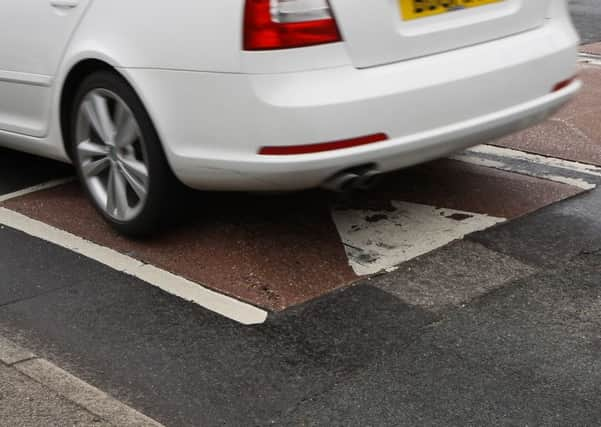Speed bumps leave Yorkshire drivers '˜most vexed'


A study for the AA has revealed 69 per cent of drivers in Yorkshire and Humberside are “most vexed” by the traffic calming measure, which was first introduced back in 1983.
The Populus online survey of a sample of 24,070 AA members revealed the national loathing of sleeping policeman stands at 62 percent. It even eclipses our dislike of road works, which came in at 59 per cent.
Advertisement
Hide AdAdvertisement
Hide AdSome 38 per cent were left ‘extremely annoyed’ by speed humps, compared to 31 per cent who cited roadworks.
David Richards, head of marketing for AA DriveTech, said: “Road humps have always been contentious - drivers cursing them and local communities wanting more of them. Humps designed and installed according to official guidance can help calm traffic in proven problem spots to make life better for communities. However, many other traffic calming techniques now exist too, for example properly designed 20mph zones and shared space.”
Speed bumps lowly popularity is perhaps best explained by the number of times drivers encounter them daily. Half of the drivers surveyed hit one, 14 per cent drove over between six and 10 a day while 21 per cent experienced more than 10 a day.
But Yorkshire people don’t have it quite as bad drivers in London. In Yorkshire and the Humber 27 per cent negotiate up to five speed humps a day, but in London it is 36 per cent. Speed humps also bring an added risk to cargo or passengers in fleet vehicles as evidenced by the death of an 86-year-old passenger on a bus in 2014.
Advertisement
Hide AdAdvertisement
Hide AdMr Richards added: “As urban areas become ever denser, traffic and people must mix safely to maintain safety and access. Traffic calming should be well designed so as to gently coerce drivers and pedestrians into being careful and considerate - without launching vehicles into the air or sending cyclists and those on foot sprawling.”
FLEET FACTS
AA DriveTech’s trainers have come up with some tips for business drivers tackling speed humps.
They advise going slow on the approach, using brakes, and then let the vehicle’s momentum take the vehicle over the hump.
On half bumps, keep the vehicle stable by straddling the bump equally. Smooth driving in humped areas is better than harsh acceleration and braking between them. Humps indicate the need for increased driver awareness as they tend to be placed in higher risk areas. Route planning to avoid road-humped residential streets can reduce the impact on cargo and passengers.